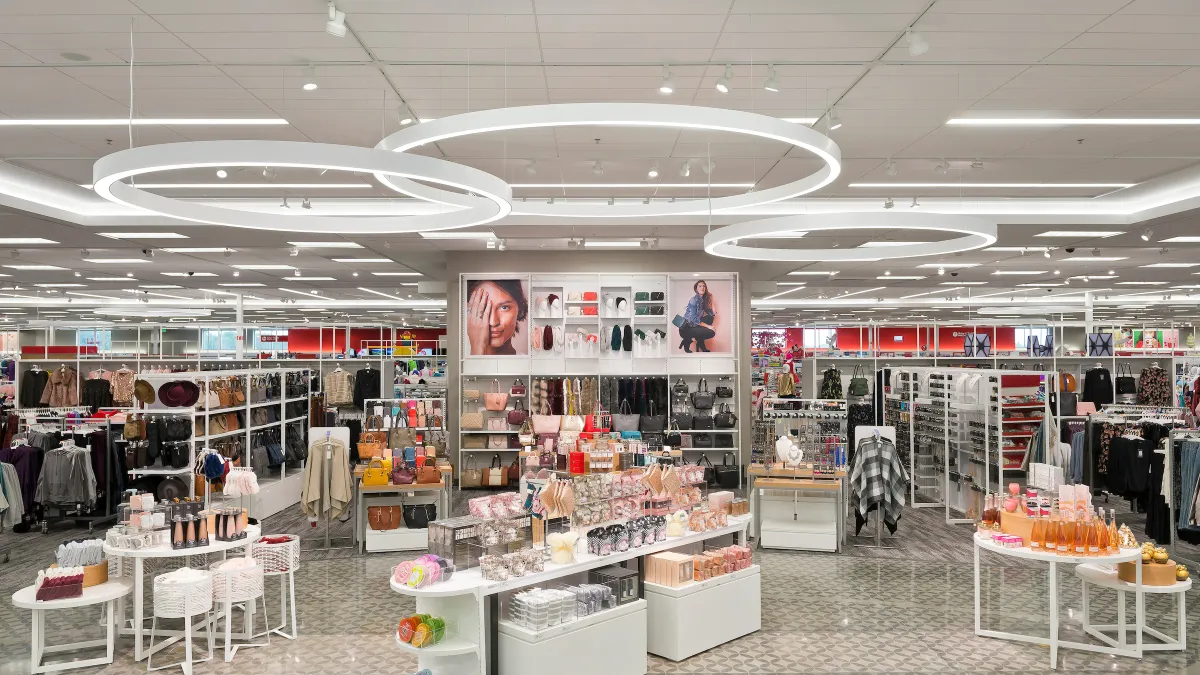Editor's Note: The following is a guest post from Krystal Maxwell, a research analyst with Navigant Research.
The digitization of modern society is influencing the retail landscape. No longer do consumers need to rely on brick-and-mortar stores for all or even most of their shopping needs. This shift has created pain points for retailers trying to retain customers and provide them with a seamless shopping experience. Lighting manufacturers and technology vendors are creating new use cases and solution offerings to address these pain points in the retail market.
Growing e-commerce sales trend in retail
Online retailers such as Amazon and Zappos have proven that consumers value the benefits integral to the online shopping experience, including convenience, reviews, additional product information, and price comparisons. Thus, the share of retail e-commerce sales has continued to grow, as shown by the US Census Bureau’s evaluation of total e-commerce sales. According to the Bureau, e-commerce sales accounted for 8.9% of total sales in 2017, a 16% increase in e-commerce sales from 2016.
Additionally, real estate services company JLL found that retail construction continued to slow in 2017. Though retail rent grew by 5.5%, investment volumes were down, with a 22.5% decrease in retail transaction volume. The amount of retail space closing this year is on pace to be the highest per year to date, as companies with large footprints either decrease the number of physical stores or are liquidated completely.
With the increasing number of store closures and move toward e-commerce sales, the majority of retail shopping is still done in brick-and- mortar stores, and these stores play an integral role in retail. Even Amazon seems to have realized the importance of brick-and- mortar stores. The company opened its first physical store in 2015 and its first automated brick-and-mortar store in January. It also acquired Whole Foods for $13.7 billion in 2017.
The need for an omnichannel approach
With the growth of e-commerce sales, retailers must work toward an omnichannel approach for sales and marketing. Omnichannel retailing is a multichannel tactic to provide consumers a fully integrated and seamless shopping experience — no matter if shopping in a brick-and-mortar store, from a computer or on a mobile device. This approach affords shoppers an experience more akin to the online shopping experience, where reviews, product information, coupons, and other information are more readily available.
Not only does omnichannel retailing allow customers to be more informed at home before shopping at a brick-and-mortar store, but they can also receive this information while in a physical store through a retailer’s mobile app. According to Retail Dive, downloads of shopping apps saw a 76% increase from 2015 to 2016. Increased use of retailers’ apps allows companies to provide a consistent shopping experience to their customers that is not dependent upon how the consumer makes their purchases.
A study of 46,000 shoppers found that omnichannel retailing works to increase sales. The study found that 7% of participants were online-only shoppers, 20% were store-only shoppers, and the remaining 73% used multiple channels for their shopping. The omnichannel approach allows consumers to seamlessly switch between reading reviews or searching for specials online to finding out if products are stocked in a store, to then finishing a purchase in-store or using a store’s buy online, pick up in-store feature.
IoT lighting solutions help retailers provide a seamless shopping experience
Providing in-store customers with the same type of shopping experience as online requires retailers to collect relevant customer information, similar to how online shopping trends are gathered. This allows retailers to provide targeted coupons based on browsing and shopping history rather than blanketed information and coupons for all shoppers.
Internet of Things (IoT) lighting solutions can address retailer pain points by helping customers navigate a physical store more seamlessly and providing a shopper product information or a relevant coupon. Lighting controls overall are moving toward a luminaire level of control instead of zone control. This shift means there are more touchpoints in a control system and data can be gathered at a more granular level. The data gathered, such as shopper location, can be used to help customers find products in the store, receive information in real-time relating to what products they are near, or even request assistance from a store associate who will be able to pinpoint their location.
Lighting manufacturers and technology firms are creating new use cases for a lighting system that addresses customer pain points. One area where retail is expressing interest is lighting-based indoor positioning systems, which provide the means to address these issues and help retailers in their goal of creating an omnichannel approach.
In October 2017, Target announced its move forward with lighting-based indoor positioning systems in half of its 1,800 US stores. This move comes after years of trialing IoT lighting solutions. It is rumored, but not verified, that Target worked with lighting incumbent Acuity Brands to deploy Atrius Retail, Acuity Brands’ integrated IoT retail solution. The Acuity Brands lighting-based IoT solutions include Atrius Navigator — part of Atrius Retail and Acuity Brands’ indoor positioning system and location-based service — which includes a sensory network based on LED luminaires embedded with Bluetooth Low Energy (BLE) radios and visible light communications (VLC).
For Atrius, the signal from the BLE beacon connects with a shopper’s mobile device to provide them a store map through the retailers’ app, essentially providing GPS indoors. The precision of a lighting-based IPS using BLE can provide retailers a customer’s location within 3 meters and VLC boasts within 3 inches. This precision allows shoppers to be directed via the mobile map to a product’s location or for a retailer to send a customer a coupon for a product they might be reviewing. A retailer can also provide product information and reviews via the app to customers, providing an omnichannel shopping experience. Globally, retail IPSs have been deployed by Philips Lighting, OSRAM, and Zumtobel. Other vendors have retail indoor positioning offerings and possibly pilots or projects deployed, details of which that are not yet available to the public.
Initial deployments show promise for future
IoT lighting solution deployments in the retail segment are still in their infancy. Most deployments are too new to provide quantitative data on the success of these solutions or at least are not shared publicly. However, one IPS deployment by Zumtobel in French retailer E.Leclerc recently showed the success of the system in increasing sales. E. Leclerc informed 2,260 customers of the opportunity to access the system for indoor mapping functionality and to receive product offers. Of those customers, 1,119 downloaded the retailer’s app and 771 customers used the app. From that customer group, E.Leclerc reported increased sales of 34%-42%. Although participation was only roughly 34%, as customers understand the benefits associated with such systems and IPS deployments increase, participation is likely to grow.
Beyond potential increased revenue for retailers, this can enhance the customer shopping experience, help increase customer loyalty, and provide brick-and-mortar retailers a solution to address this shift in the retail landscape.


















